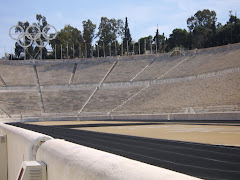And when it comes to most recognized brands, Coca-Cola is also tough to beat.
Coke is also known for famous product packages -- starting with the "contour bottle" -- and the South's leading art museum is preparing to host an exhibition in celebration of the container's 100th anniversary.
As noted in the Atlanta Journal-Constitution and via museum press materials, the exhibition “The Coca-Cola Bottle: An American Icon at 100” will open Feb. 28.
It's all happening in the home town of the Atlanta-based beverage giant, in the galleries of the High Museum of Art (a client).
Since its inception in 1915, the Coca-Cola “contour bottle” became one of the world's most recognized icons. Originally designed by a team at the Root Glass Company of Terre Haute, Ind., the bottle emerged as a distinct package for an already ubiquitous product launched in 1886.
The design was the result of a competition challenging bottle manufacturers to develop a container recognizable even if broken or touched in the dark.
The winning design’s curves and celadon-tinted glass ultimately had an outstanding impact on 20th-century visual art and culture (the term "bottle green" eventually followed in the realm of color nomenclature).
The exhibition features over 100 objects, including more than 15 works by Andy Warhol and dozens
of photographs inspired by or featuring the bottle. The items will be arranged in sections by history, photography and pop art (no pun intended).
of photographs inspired by or featuring the bottle. The items will be arranged in sections by history, photography and pop art (no pun intended).
When I first learned of this exhibition, it intrigued me given its overlap with the World of Coca-Cola's year-long exhibition of Howard Finster folk art works featuring, inspired by or painted on actual contour bottles of varying size.
It also surprised me the High is not including its own Finster/Coke item (a hand-painted, oversized contour bottle) from the museum's permanent collection in the exhibition. But then, Finster's painted items don't fit the trio of exhibition sections.
Another permanent collection item -- a vintage magazine illustration (ad) featuring a couple with two six-bottle cartons -- also remains behind-the-scenes, as does a 1974 bottle-free Elliott Erwitt image of a Coke vending machine positioned with several rockets.
Only time will tell whether the High will mount the permanent collection Coke items in tandem with "An American Icon at 100" (I hope they do).
Briefly getting back to the Olympic rings, their creator -- modern Olympic founder Baron Pierre de Coubertin -- first sketched and hand-colored the design in 1913 and 1914 as a single row of intertwined circles, just a year or two ahead of the guys in Indiana embarking on their bottle contest entry.
Whether de Coubertin was inspired by five pre-contour bottle condensation rings (on his desk or table as he sipped a Coke while sketching) is one iconic backstory we may never know.
Images via the High Museum of Art. Image credits:
-- nendo (Japanese, founded Tokyo, 2002) Bottleware, 2012. Photo c. The Coca-Cola Company. Diagram courtesy of nendo
-- Jan Saudek (Czech, born 1935), Broken Bottle, 1973. Collection of Joyce Linker. c. Jan Saudek
-- Andy Warhol (American, 1928-1987), Three Coke Bottles, 1962, silkscreen, ink and graphite on linen, The Andy Warhol Museum, Pittsburgh; Founding Collection, Contribution The Andy Warhol Foundation for Visual Arts, Inc., 1998.1.20 c. 2015 The Andy Warhol Foundation for the Visual Arts, Inc./Artists

















No comments:
Post a Comment